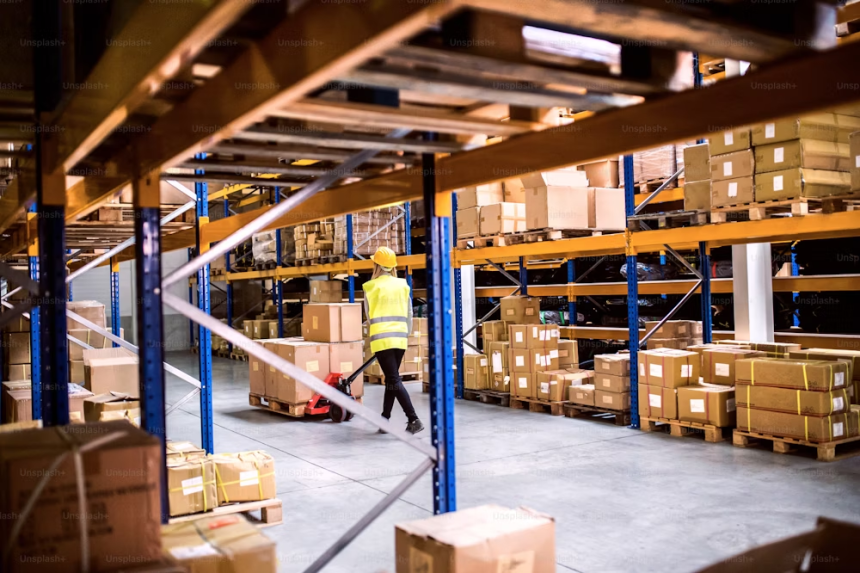Table of Content
Try Vizitor for Free!

Tue, Feb 27, 2024
Read in 11 minutes
Embrace agility, optimize space, and empower your workforce with hot desking, a cornerstone of today’s smart workplace design. Hot desking allows employees to ditch assigned seating and choose their workspace based on daily needs. This fosters collaboration and a more dynamic work environment.
Gone are the days of frantic desk searches at the start of the day. Advanced technology empowers employees to find their perfect fit, whether it’s a dual-monitor setup for focused work or a collaborative space near colleagues. Booking systems ensure access to the desired amenities and even allow for short-term desk reservations for maximum flexibility.
Hot desking isn’t just trendy; it’s future-proofing your workplace. Businesses that embrace this concept create an environment that caters to the evolving needs of a modern workforce. However, a one-size-fits-all approach doesn’t work. In this blog post, we’ll delve deeper into hot desking, exploring best practices, common benefits and challenges, and how to determine if it’s the right fit for your company.
In this article, you will learn:
1. Introduction to Hot Desking:
-What is hot desking? And why do we call it hot desking?
-How does it work?
-Difference between hot desking vs hosting vs free addressing.
2. Benefits of Hot Desking
3. The Challenges of Hot Desking:
-Why is desk booking data not enough?
-Why you need hybrid workplace management software to make hot desking work!
4. How Vizitor Software can help with Hot Desking
-Hot Desking Etiquette: Dos and Don’ts
So, what exactly is hot desking and why do we call it that?
Hot desking is a flexible seating setup where employees and visitors can reserve and use a desk whenever they need it during the day. It’s all about being able to grab a spot to work on the fly, without having a permanent desk assigned to you. The idea behind hot desking is to make the most of the space you have available while giving people the freedom to choose how, where, and who they work within the office.
Now, you might be wondering why it’s called hot desking. Well, the term comes from the practice of sailors called “hot racking.” This is when sailors on different shifts share the same bunk at different times to make the most of the limited space onboard ships.
In the modern world, hot desking is kind of like hot racking but with desks instead of bunks. It’s about different people using the same workspace at different times throughout the day.
Here’s how hot desking works:
In the old days, hot desking was like a race to grab the best spot before it’s taken. But now, things have changed for the better, thanks to hot desking technology. With this tech, employees can easily book a desk that has everything they need, either using a mobile app or when they arrive at the office. Once they’ve booked their desk, they can work from there for the day. And if they want to switch things up or book a different desk for another day, they can do that too. It’s all about making sure everyone has a comfortable and productive place to work.
Difference between hot desking vs hosting vs free addressing.
Let’s break down the differences between hot desking, hoteling, and free addressing:
a. Hot Desking:
Hot desking is when multiple employees share the same workspace at different times.
Employees don’t have assigned desks; they use whatever space is available when they arrive or book a desk through hot desking software.
It’s a cost-effective way to manage space and encourage collaboration among employees.
b. Desk Sharing:
Desk sharing happens when two or more employees use the same workspace simultaneously.
It can involve sharing a workstation or using the same desk during different shifts.
Often used in industries where space is limited or in high demand.
c. Desk Hoteling:
Desk hoteling lets employees reserve workspaces or meeting rooms for specific periods, usually as needed.
There’s usually an online reservation system for booking spaces in advance.
Useful for businesses with remote workers or visiting employees.
Now, let’s dive into the benefits of hot desking.
The Advantages of Hot Desking
Hot desking offers numerous benefits for both employees and businesses, making it a valuable solution for optimizing workspace usage. In today’s dynamic office environments, where fewer employees are present on site, maximizing space efficiency has become essential. Hot desks play a pivotal role in this strategy, particularly as more individuals return to the workplace. Here are the key advantages that hot desking can bring to your organization:
1. Flexibility:
Hot desking empowers employees to choose where they work, fostering a sense of autonomy and enhancing productivity. Whether they prefer a quiet corner or a bustling collaborative area, employees can select the environment that suits them best, whether they’re fully onsite or part of a hybrid workforce.
2. Collaboration and Productivity:
Adopting a hot desking policy can foster collaboration and boost productivity. By encouraging employees to change their seating locations regularly, whether among different teams or departments, hot desking facilitates cross-functional interactions and contributes to a more vibrant company culture.
3. Cost Savings:
Unlike permanent desk assignments, hot desking reduces the need for excess space, resulting in cost savings for your organization. By maximizing existing space and eliminating unused desks, you can optimize your real estate expenses and potentially downsize your office footprint.
4. Data-Driven Decision-Making:
Hot desking provides valuable insights into workspace utilization patterns, enabling informed decision-making about future real estate needs. By analyzing usage trends, you can optimize space allocation and enhance operational efficiency.
5. Tidier Workspace:
With hot desks, desks remain clutter-free as employees are encouraged to keep personal items to a minimum. This promotes a cleaner and more organized office environment, improving overall aesthetics and productivity.
6. Improved Space Utilization:
Hot desking maximizes office space by reducing the number of empty desks and increasing desk-sharing ratios. This efficient utilization of resources optimizes workspace functionality and minimizes waste.
7. Better Employee Relationships:
Hot desking facilitates interactions among employees from different departments, fostering stronger relationships and promoting teamwork. By creating opportunities for collaboration, it enhances cross-departmental rapport and cohesion.
8. Enhanced Collaboration:
A hot desking model enables quick adaptation to changing project needs by providing flexible workspace arrangements. This agility promotes efficiency and collaboration, facilitating seamless project collaboration across departments.
9. Cross-Company Cohesion:
Hot desking encourages cross-department collaboration, fostering creativity and innovation through exposure to diverse perspectives. Facilitating interactions among team members enhances cohesion and drives collective success.
10. Employee Satisfaction:
Empowering employees to choose their workspace enhances satisfaction and engagement. Hot desking streamlines hybrid work arrangements, allowing for greater flexibility while maintaining work-life balance.
11. Efficiency:
Hot desking simplifies the workspace experience, allowing employees to focus on their tasks without the need to book desks in advance. This seamless approach promotes efficiency and productivity in the workplace.
12. Workplace Hygiene:
Hot desking promotes cleanliness and hygiene by minimizing clutter and encouraging employees to maintain clean workspaces. With no dedicated desks, cleanliness expectations are heightened, creating safer and more hygienic environments.
Overall, hot desking offers a flexible, efficient, and collaborative approach to workspace management, aligning with the evolving needs of modern organizations and their workforce.
The Hot Desking Balancing Act: Challenges and Solutions
While hot desking might seem like a simple concept, implementing it effectively requires careful consideration. Here are some key challenges and how to navigate them:
1. Technology is Key:
Forget “musical chairs” chaos! Invest in hot desking software that empowers employees to book desks seamlessly, preventing frustration and ensuring efficient utilization.
2. Communication Conquers Resistance:
Change can be tough, especially when it disrupts routine. Openly communicate the rationale behind hot desking, highlighting its benefits for both the company and individual employees. Remember, a hybrid work environment often means fewer people in the office at once, making hot desking a practical solution.
3. Finding the “Home Away from Home”:
With hot desks, dedicated desk spaces become unavailable. However, consider offering lockable personal storage options like Luxer One, allowing employees to safely store belongings between visits. Additionally, designate “quiet spaces” and collaboration areas catering to different work styles and needs.
4. Managing the Neighbor Factor:
Hot desking means less control over your immediate workspace. To address concerns about chatty colleagues, encourage employees to utilize designated quiet areas for focused work and designated social areas for collaboration and casual interaction.
Why Desk Booking Data Falls Short?
Although desk booking data offers valuable insights into space utilization, it cannot delve into the finer nuances of space usage. While it tells us which desks are being booked, it doesn’t provide a deeper understanding of how those spaces are being utilized.
By harnessing IoT technology, such as the one provided by OfficeSpace, facility managers gain access to robust presence data. This data goes beyond simple booking records, offering advanced analytics that enables informed decisions about optimizing space usage. With this comprehensive insight, facility managers can make strategic adjustments to enhance workspace efficiency and productivity.
Why Hybrid Workplace Management Software is Essential for Hot Desking Success?
While hot desking offers numerous benefits in a hybrid work model, its smooth operation hinges on robust supporting tools.
Here’s why workplace management software is crucial:
Streamlining the Hot Desking Experience:
Seamless Setup & Management: From initial configuration to daily operations, the software simplifies the entire process, ensuring a smooth transition for both employees and administrators.
Empowering Employees:
It equips employees with the necessary functionalities for efficient hybrid work, including desk and meeting room booking tools, fostering autonomy and control over their work environment.
Enhancing the Overall Experience:
The software goes beyond hot desking, improving various aspects of the workplace experience for individuals and teams.
Key Features of Effective Software:
Move Management:
This feature simplifies the planning and execution of both individual and large-scale moves, ensuring smooth transitions for employees.
Space Management:
It optimizes space utilization by identifying and eliminating redundant areas, maximizing your office footprint.
Real-time Office Maps:
Interactive maps assist with wayfinding and provide real-time availability information for desks and meeting rooms. Booking Tools: These tools allow frictionless and flexible booking for various scenarios, such as hoteling, activity-based working, and neighborhoods, catering to diverse employee preferences.
Scenario Planning:
Visualize potential floor plan changes and make data-driven decisions for your office space with this functionality.
Going Beyond the Basics with OfficeSpace Software:
Extensive Reporting:
Gain valuable insights into space utilization and occupancy data to optimize your office layout and forecast future needs. Cost-saving operational reports help identify areas for improvement and inform strategic facility updates.
Tech Integration:
Enjoy enhanced safety protocols, cleaner data collection, and a cohesive environment through Building Automation Systems (BAS) and Internet of Things (IoT) features.
Seamless Connection:
Empower employees with a mobile app accessible anywhere, anytime. Integrate it with popular platforms like Slack, Microsoft 365, Teams, and Google Calendar for added convenience.
Remember:
While software plays a vital role, remember to establish hot desking etiquette to ensure a positive and productive experience for everyone.
Do:
Reserve your desk in advance:
Utilize the booking system to avoid unnecessary conflicts and secure your preferred workspace.
Be respectful of others:
Maintain a clean and organized workspace, leaving it in the same condition you found it. Avoid loud noises or disruptive behavior that could distract others.
Be mindful of your belongings:
Hot desking typically requires clearing your desk at the end of the day. Utilize personal storage options or lockers if needed.
Communicate effectively:
If you encounter any issues or require assistance, don’t hesitate to reach out to designated personnel or use available communication channels.
Don’t:
Leave personal belongings unattended:
Avoid leaving valuables unattended for extended periods. Utilize secure storage options for personal items. Assume ownership of a specific desk: Hot desking is a flexible system; refrain from claiming a specific desk permanently.
Disrupt the work environment:
Be mindful of noise levels and avoid behavior that could negatively impact others’ productivity.
Forget common courtesy:
Respect shared spaces, maintain cleanliness, and be considerate of your fellow hot desking colleagues. By fostering a positive and respectful environment through responsible hot desking practices and leveraging the power of workplace management software, organizations can reap the numerous benefits of this flexible work model.
Conclusion: Hot Desking - Embracing Flexibility with Confidence
By fostering a positive and respectful environment through responsible hot desking practices and leveraging the power of workplace management software, organizations can reap the numerous benefits of this flexible work model.
Hot desking can lead to increased space utilization, cost savings, and employee satisfaction when implemented effectively. Ready to unlock the full potential of hot desking?
Visit Vizitor today! We offer a comprehensive suite of workplace management solutions, including powerful software features and expert guidance, to help you seamlessly implement and manage hot desking in your organization.
Explore our website or contact us to learn more about how Vizitor can empower your hybrid workplace strategy.








